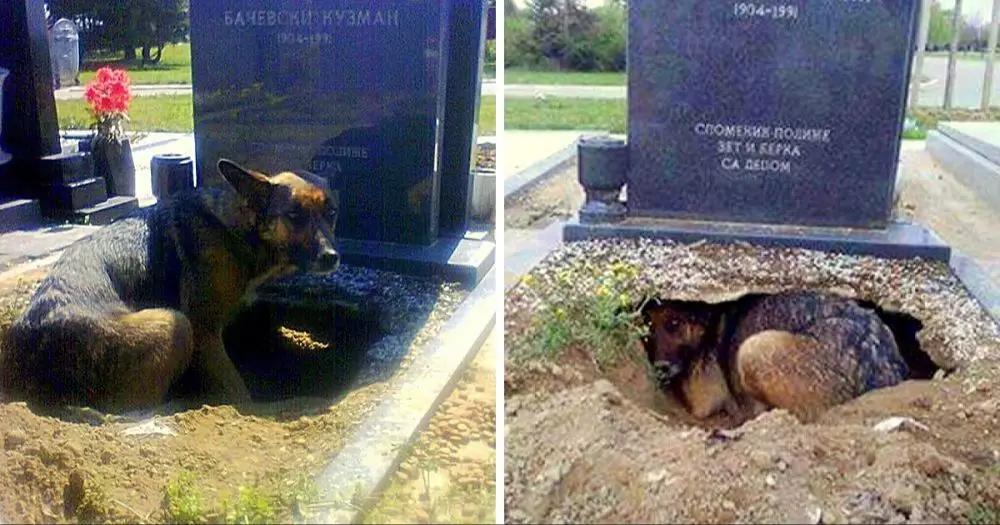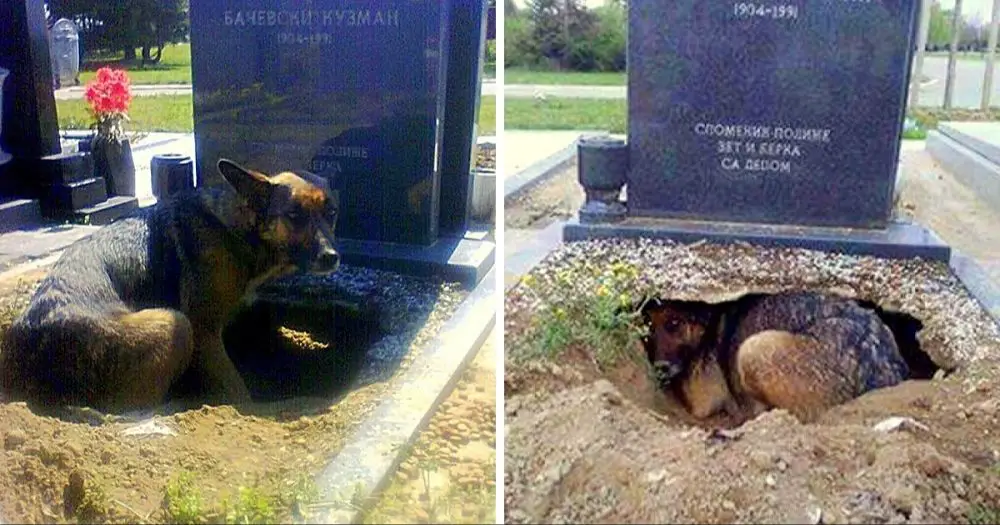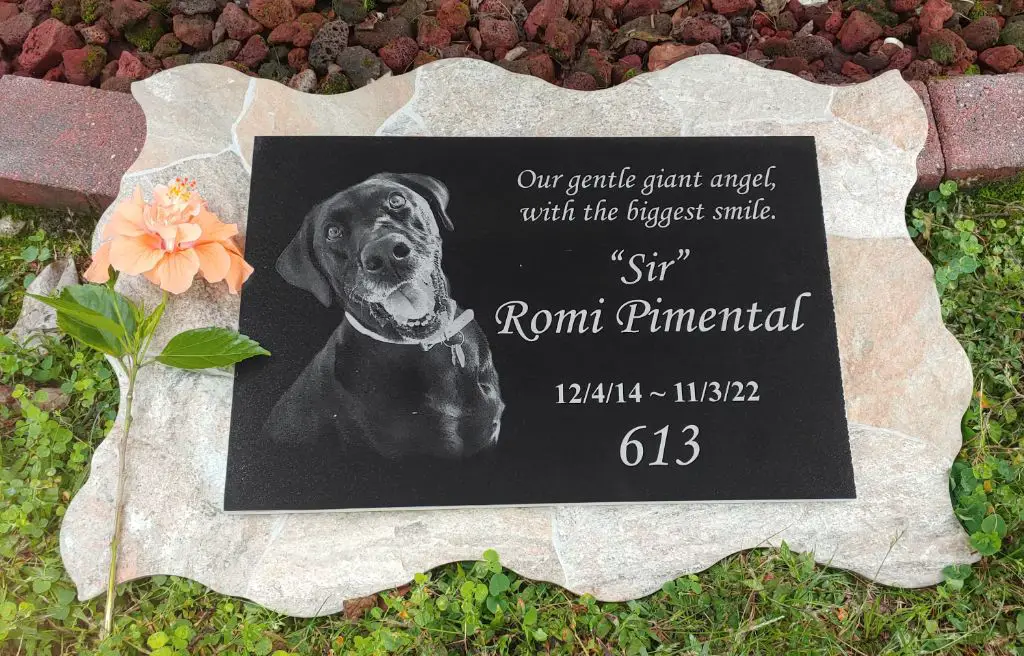Introduction
Losing a beloved dog is one of the hardest experiences for a pet owner. When a dog passes away, owners must make difficult decisions about burial options. Proper burial shows respect, provides closure, and memorializes the pet. Rules and regulations for burying animals vary significantly depending on location. Pet owners must research local laws, properly bury the pet, and care for the grave. This process enables owners to grieve, gain closure, and memorialize their dogs.
This article provides pet owners guidance on buried dog burials. It covers burial regulations, site selection, grave preparation, placement, filling, marking, and upkeep. Alternative options like cremation are discussed. The focus is on supporting owners through this difficult process while respecting local requirements.
Local Laws and Regulations
Before burying your dog, it is crucial to research the laws and regulations in your municipality and region. Many areas have restrictions on digging graves and burials on private property. Some municipalities may require permits or mandate a minimum grave depth. Contact your local city or county government office to learn about burial regulations and permitting requirements in your area.
For example, some places require dog graves to be dug at least 3-4 feet deep to prevent odors and scavenging by wild animals. Other areas may restrict burials in certain zoning districts or require setbacks from property lines. Some homeowners associations (HOAs) prohibit or regulate burials for aesthetic reasons. Always check local ordinances to avoid fines or forced exhumation. The county health department may also impose burial depth standards.
If you live inside city limits, dog burials may be prohibited or limited to designated pet cemeteries. Rural areas generally have fewer restrictions. Research state laws as well, since there are sometimes overarching statutes dictating minimum burial depths across an entire state. Consult with local officials to ensure compliance before proceeding.
Burial Site Selection
Selecting the right location to bury your dog is an important decision that requires some thought. Here are some factors to consider when choosing a burial site:
Privacy – Choose a spot that feels private and secluded, where you can have quiet moments to reflect and remember your pet. This may be under a tree in the backyard or a corner of the garden.

Shade – Look for areas with shade, as this will keep the ground cooler and help preserve the gravesite. The shade from trees or shrubs will also create a serene environment.
Drainage – Pick a well-draining spot, avoiding low areas where water can accumulate. Digging in soggy ground can be difficult, and excess moisture can damage the gravesite over time.
Comfort – Opt for an area you find comforting, perhaps with a nice view or landscape. This will make visiting the grave more pleasant and meditative.
Future use – Consider if you may alter the landscaping or need to use that part of the yard differently in the future. Avoid sites that limit future changes.
Taking the time to select the right burial location shows respect for your pet. It creates a special place to memorialize them for years to come.
Preparing the Grave
Before burying your dog, you’ll need to prepare a proper grave. The recommended depth and dimensions of the grave depend on the size of your dog:
- Small dogs (under 25 lbs): Graves should be 2-3 feet deep and about 2 feet wide and long.
- Medium dogs (25-100 lbs): Graves should be 3-4 feet deep and about 3 feet wide and 2-3 feet long.
- Large dogs (over 100 lbs): Graves should be 4-6 feet deep and at least 3 feet wide and long.

The grave should allow at least 1 foot of soil to cover the dog’s body after burial. Be sure to call 811 before you start digging to avoid hitting any underground utility lines.
You’ll need the following materials to dig and line the grave:
- Shovel
- Pickaxe (for harder ground)
- Gloves
- Tarp or blanket (to line the bottom of the grave)
Choose a shady site for the grave, as direct sunlight can cause the ground to shift over time. Remove any rocks or debris as you dig. Line the bottom of the grave with a tarp or blanket before gently placing your dog inside.
Placing the Dog in the Grave
Once the grave is dug and prepared, it’s time to place your dog in the grave. This can be an emotional moment, so give yourself time and space to grieve. Consider having a small private burial if it is too difficult to have others attend. You may want to transport your dog to the gravesite in a pet casket, wrapped in a favorite blanket or towel, or simply carried in your arms.
If you are having others join for the burial, decide whether you want it to be a solemn ceremony or more of a celebration of your dog’s life. Select a few meaningful readings or songs in advance if desired. Place any personal items in with your dog, like a toy or collar. Gently lower your dog into the grave in a respectful manner. Some people place flowers or a special stone on top. Take time to express your love and say goodbye before covering the grave.

Whether public or private, be present in the moment and allow yourself to fully process the emotions surrounding this farewell. Find closure in knowing you provided a dignified, loving burial for your cherished companion.
Filling In and Marking the Grave
After placing your dog in the grave, replace the dirt you dug out and use a shovel to tamp down the soil firmly. Fill the grave until the dirt is level or slightly mounded over the site to account for settling. Packing down the soil helps prevent future sinking or collapsing of the grave. Once the grave is filled, decide if you want to add any kind of marker or memorial.
Some popular grave marker options include:
- Placing a large stone or boulder at the head of the grave
- Planting a tree or bush on the burial site
- Adding a customized memorial plaque or concrete stepping stone engraved with your dog’s name
- Building a simple wooden cross or grave frame around the site
Choose a marker that fits your dog’s personality and your own memorial preferences. The grave marker not only honors your dog’s life, but also helps identify the burial spot in the future.
Caring for the Gravesite
After your dog has been laid to rest, you may want to do some things to honor their memory and care for their burial spot. Here are some tips:
- Place a marker, headstone or other memorial item to identify the grave. This will help ensure the gravesite is not accidentally disturbed.
- Plant flowers or a tree at the head of the grave. Choose perennials that will come back year after year.
- Put a protective border around the gravesite, like rocks or fencing, to prevent digging or damage by animals.
- Visit regularly to tidy up the area. Pull any weeds, rake leaves, remove debris.
- Consider placing a bench or statues nearby to create a memorial spot for quiet reflection.
- On special occasions, like your dog’s birthday or the anniversary of their passing, decorate the grave with a wreath, bouquet, or other mementos.
- If desired, install a solar light to gently illuminate the grave at night.

Caring for your dog’s burial place can be a comforting way to honor their memory. Take steps to make it a beautiful final resting spot.
Alternative Options
While burying your dog at home is a popular choice, there are some other options worth considering as well. Many pet owners opt for cremation, which allows you to keep your dog’s ashes in an urn or scatter them in a special place. Cremation services are offered by most veterinarians and pet funeral providers.
Additionally, you could look into pet cemeteries in your area, which offer gravesites and memorial options specifically for pets. These facilities take care of maintaining the grounds and grave markers. Though pet cemeteries come with fees, they can provide a comforting sense of community and memorialization.
Take time to think about what final arrangement aligns best with your wishes and beliefs. Your veterinarian or a pet loss counselor can talk you through all the options to help you make the right decision for you and your dog.
Coping With Loss
Losing a pet can be an extremely difficult and emotional experience. Pets become like members of the family, and saying goodbye is never easy. Here are some tips for coping with the grief and loss of your cherished canine companion:
Give yourself time to grieve. There’s no set timeline, so allow yourself to fully process the emotions and feel them. Cry, reminisce about your favorite memories, look through old photos – do whatever helps you start to make peace with it.
Consider creating a memorial. Light candles, make a photo collage or memory book, or plant a tree in your dog’s honor. These rituals can provide closure and comfort.
Talk about your feelings with close family/friends. Sharing stories about your dog can validate your grief. Those close to you and your pet can empathize.
Take care of yourself physically. Grieving can be exhausting, so try to eat well, exercise, and rest when needed. Be patient and kind with yourself during this difficult transition.
If your grief feels unmanageable, seek professional help. There’s no shame in needing extra support. A pet bereavement counselor can guide you through the mourning process.
Consider honoring your pet’s memory by adopting again when you’re ready. Providing a home to a dog in need can be very healing. But give yourself time first.
Remember the joy your dog brought you. Focus on the special moments you shared rather than the pain of loss. Your pet would want you to smile again.
Conclusion
Burying a beloved dog that has passed away is often a difficult but meaningful process. Properly burying your dog shows them respect and can provide closure. When burying your dog, be sure to follow local laws, choose an appropriate location, dig a properly sized grave, and gently place your dog inside. Mark the grave site clearly and care for it over time. While burial is not the only option, it is often the most personal and healing choice when performed with care. Remember to move at your own pace and honor your pet in a way that feels right to you.
The entire burial process requires thoughtfulness and compassion. Consider legal requirements so as not to disturb others. Select a site that is permissible and meaningful to you. Dig a grave adequately sized for your dog and line it respectfully. Place your dog inside with tenderness. Fill the grave carefully and mark it clearly to memorialize your pet. Take time to grieve and care for the gravesite over time. With proper burial, you can pay tribute to your dog’s life and your bond with them.